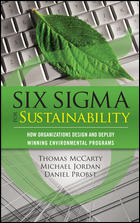We are a “need to achieve” society. Success may be measured differently person to person, but success is not only a goal, it is the primary—if not only—objective. In theory it could project a strong, competitive, no-nonsense character. We want to be successful. We want our children to be successful. We want our company to be successful. We want our country to be successful. But how do we get there?
If we are really only out for success does that mean failure is not an option? And if failure is not an option, how does that affect our ability to move forward? According to innovation experts, it affects us all, including the quality practitioner, greatly.
When speaking of creativity and innovation, experts agree that you need to fail along the way. The basic process is take a risk, improve, and—then and only then—succeed. It can be a long process. Everyone involved must be willing to fail. The problem is many of us get queasy when anyone mentions this non-vulgar but equally offensive f-word.
In a recent ASQ study—in anticipation of National Engineers Week (held annually, in February) and conducted by Kelton Global—teens and their parents were asked to express their attitudes toward failure, risk-taking and innovation. Nearly all teens (95%) agree that academic risk-taking is required for innovation in many careers. Ninety-eight percent of teens surveyed claim that they have learned some problem-solving skills from several sources: teacher (27%), technology—computer games, Internet, video games—(22%), parents (20%), friends (17%) and sports teams (8%). But while teens feel they need to take risks and are learning problem-solving skills, almost half (46%) of youth say they are afraid to fail when given a difficult problem to solve. That might be why only 11% of teens say they are happy to solve challenging problems, while nearly half are anxious about it.
What the survey tells us is that we have a need to succeed but have a negative attitude toward the one thing that produces success—failure. Consider two of the many statements made over the centuries about the one-two punch of failure and success:
“One fails forward toward success.”
— Charles F. Kettering
“If at first you don’t succeed, try, try, try again.”
— W.E. Hickson
While the survey specifically questions teens, their parents were also asked questions and the attitudes were very similar.
If these adults get uncomfortable if an outcome is judged as a failure, what about the rest of us? For instance, the quality practitioner.
Many quality practitioners define quality as “getting it right the first time.” From a product and service perspective that might be a healthy way to look at quality. However, quality is not simply about products and services anymore. Quality needs to be ingrained throughout the enterprise where getting it right the first time is almost impossible to fathom, let alone accomplish. A little failure can go a long way in getting an innovative thought into the organizational culture.
However, we are averse to risk. Why? Peter Merrill, author of “Do It Right the Second Time” (ASQ Quality Press), suggests it is because we understand risk more than we did a decade ago. “We are able,” he writes in “Risky Business—Why Innovators Can’t Be Afraid to Fail” (QP, 2012), “to calculate, prioritize and mitigate risk. Because of these abilities, we have developed a mindset that risk should never enter our lives.”
We need to stop that thinking. Or, at least rein it in. In a profession where risk and failure are issues to eliminate, it is a significant mindset shift. However, the quality toolbox is full of tools to aid in innovation. Quality professionals are in a unique position to not only introduce innovation tools but teach essential problem-solving skills. This expansion of our thinking process positions us to be more prepared for the present and make us better mentors in the future. Who else better to teach the next generation to do the same?
The ASQ STEM survey was conducted between January 3 and January 11, 2013, among 391 parents and 511 American teens ages 12 to 17, using an email invitation and an online survey. The margin of error is ±4.3%.









